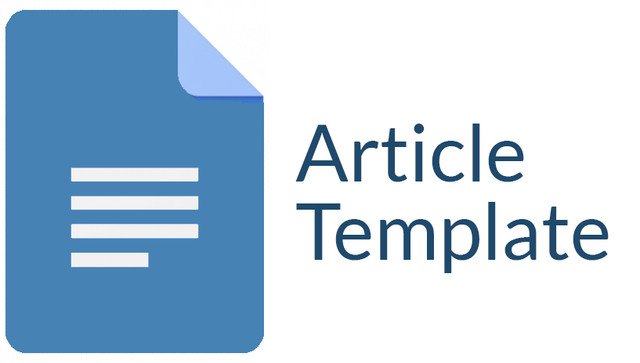The Effect of Seawater on The Compressive Strength and Split Tensile Strength in Self Compacting Geopolymer Concrete
DOI:
https://doi.org/10.30736/cvl.v6i2.722Keywords:
SCGC, Fly Ash, Compressive Strength, Split Tensile Strenght, Sea waterAbstract
Fly ash is a kind of trash that may degrade the quality of the air. As a result, it is critical that it be used as an ecologically beneficial material. Although cement is the most often used construction material, its manufacturing generates carbon dioxide, which may degrade air quality. The aim of this research was to evaluate the compressive strength and split tensile strength of self-compacting geopolymer concrete (SCGC) cured in seawater, as well as to compare SCGC with and without saltwater. In this research, a cylindrical specimen with a diameter of 10 cm and a height of 20 cm was utilized as the specimen. Fly ash is used in proportion to fine and coarse aggregates at a ratio of 1: 0.65: 1.5. Using a 0.4 activator to binder ratio. The molarity ranges utilized were 11 M, 12 M, 13 M, 14 M, and 15 M. Compressive strength and split tensile strength tests were conducted on 28-day-old concrete. The findings indicated that when the molarity of SCGC treated with seawater increased from 11 to 15 M, the compressive and split tensile strengths increased. Compressive strength values were greatest in SCGC treated at room temperature when an activator of 13 M was used, and compressive strength values dropped in SCGC treated at room temperature when an activator greater than 13 M was usedDownloads
References
E. Bachtiar et al., “The development of compressive strength on geopolymer mortar using fly ash as based material in South Sulawesi,†Int. J. Civ. Eng. Technol., vol. 9, no. 10, pp. 1465–1472, 2018.
E. Bachtiar, I. Marzuki, A. M. Setiawan, and A. M. Nurpadli, “Correlation of NAOH composition and alkali modulus to compressive strength on geopolymers mortar,†ARPN J. Eng. Appl. Sci., vol. 15, no. 5, pp. 1–6, 2020.
EFNARC, The European Guidelines for Self-Compacting Concrete: Specification, Production and Use. UK, 2005.
E. Bachtiar, “The connection between oven curing duration and compressive strength on C-type fly ash based-Geopolymer mortar,†ARPN J. Eng. Appl. Sci., vol. 15, no. 5, pp. 1–6, 2020.
Idris and Ibrahim, “Pemanaatan abu terbang batu bara sebagai pengganti sebagian semen untuk campuran beton,†vol. 2019, pp. 165–170, 2019.
J. Davidovits, Geopolymer Chemistry and Applications. Geopolymer Institute, Saint-Quentin, 2008.
J. Van Jaarsveld, J. Van Deventer, and G. Lukey, “The Effect Of Composition And Temperature On The Properties Of Fly Ash-And Kaolinite-Based Geopolymers,†Chem. Eng. J., vol. 89, pp. 63–73, 2002.
M. F. Nuruddin, S. Demie, and N. Shafiq, “Effect of mix composition on workability and compressive strength of self-compacting geopolymer concrete,†Can. J. Civ. Eng., vol. 38, no. 11, pp. 1196–1203, 2011, doi: 10.1139/l11-077.
F. Memon, M. Nuruddin, and N. Shafiq, “Karakteristik kekuatan tekan dan kemampuan kerja beton geopolimer pemadatan mandiri berbasis abu laying rendah kalsium,†J. Int. Tek. Sipil dan Lingkung., vol. 3, no. 2, pp. 72–78, 2011.
N. A. Lloyd and B. V. Rangan, “Geopolymer concrete with fly ash,†2nd Int. Conf. Sustain. Constr. Mater. Technol., vol. 7, pp. 1493–1504, 2010.
P. Nath and P. K. Sarker, “Flexural strength and elastic modulus of ambient-cured blended low-calcium fly ash geopolymer concrete,†Constr. Build. Mater., vol. 130, pp. 22–31, Jan. 2017, doi: 10.1016/j.conbuildmat.2016.11.034.
E. Bachtiar et al., “The Relationship of Temperature and Compressive Strength on Geopolymer Mortar using Fly Ash-Based,†IOP Conf. Ser. Mater. Sci. Eng., vol. 885, no. 1, 2020, doi: 10.1088/1757-899X/885/1/012019.
F. A. Memon, M. F. Nuruddin, S. Khan, N. Shafiq, and T. Ayub, “Effect of sodium hydroxide concentration on fresh properties and compressive strength of self-compacting geopolymer concrete,†J. Eng. Sci. Technol., vol. 8, no. 1, pp. 44–56, 2013.
ASTM C39/C39M − 12a, Standard Test Method for Compressive Strength of Cylindrical Concrete Specimens. 2012.
ASTM C496/C496M-11, Standard Test Method for Splitting Tensile Strength of Cylindrical Concrete Specimen. 2011.
Downloads
Additional Files
Published
How to Cite
Issue
Section
License
Authors who publish in this journal agree to the following terms:
-
- Copyright on any article is held by the author.
- The author grants the journal first publication rights with the work licensed concurrently under a Creative Commons Attribution License that allows others to share the work with an acknowledgment of authorship and initial publication of the work in this journal.
- Authors may make separate, additional contractual arrangements for the non-exclusive distribution of the journal's published version of that journal (for example, posting it to an institutional repository or publishing it in a book), with an acknowledgment of its initial publication in this journal.
- Authors are permitted and encouraged to post their work online (for example, in an institutional repository or on their website) before and during the submission process, as doing so can lead to productive exchange, as well as earlier and greater citation of the published work. .
- Published articles and related materials distributed under a Creative Commons Attribution-ShareAlike 4.0 International License
Civilla (Jurnal Teknik Sipil Universitas Islam Lamongan) by Universitas Islam Lamongan is licensed under a Creative Commons Attribution-ShareAlike 4.0 International License.
Based on a work at https://jurnalteknik.unisla.ac.id/index.php/CVL/index








